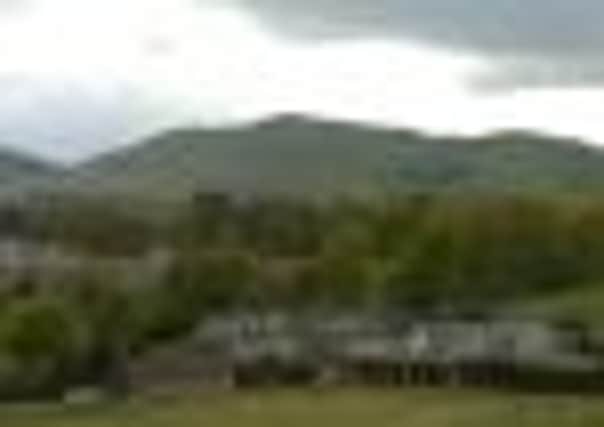Golf clubs feel pinch as wettest summer for 100 years takes toll


The wettest summer in 100 years left courses closed at a time of the year when they are normally at their busiest. Many still have not recovered, the water table having risen to a level where it does not take much rain for fairways, bunkers and greens to flood.
Reduced playing opportunities, both for members and visitors, have had a knock-on effect. Bar and catering income has been hit. Club professionals have suffered, too, due to a drop in footfall in their shops.
Advertisement
Hide AdAdvertisement
Hide Ad“What golf clubs have lost this season due to bad weather obviously isn’t just green fees,” confirmed Bernadette Giefer, the club manager at Mortonhall in Edinburgh.
“It will be a knock-on effect that also has ramifications in the bar and catering. It always is when there has been a bad season, as the revenue streams are linked.”
Towards the end of November, Gieger reported that Mortonhall was £4,000 down for the year on green fees. While that alone would not put a big dent in the club’s balance sheet, a drop of £19,000 on bar sales and £13,000 on catering definitely will.
“That will hurt,” she added. “We can recoup some of that, but I imagine for our year end that we will be down in the bar and catering by £25,000.”
Gordon Simpson is both the head PGA professional and general manager at Hilton Park, where trying to keep two courses open proved a real battle at times for the club’s team of greenkeepers this year. “This has definitely been one of the toughest years for clubs in terms of the weather and it has tipped a lot of people over the edge in terms of playing,” he commented.
“Some people had already been starting to get out of the habit of playing and this year they don’t feel they’ve been getting value for money for their annual subscription.” The consequence of that is already being felt by some unlucky clubs.
At Aberdour, for example, the club captain has predicted 2013 as being a “year for tightening expenditure” due to the Fife club being “at least 60 members short of full membership”.
Some of those not renewing memberships there have been attracted to neighbouring Burntisland, where the annual subscription has been lowered to £375 for the next three years, but it is quite a turnaround, nonetheless, for a club that had a waiting list to join until quite recently.
Advertisement
Hide AdAdvertisement
Hide Ad“Clubs have to cut their cloths accordingly,” added Simpson. “They have to do what is best for them. Here, we are aiming to keep improving the facilities by investing in the course, the clubhouse and machinery. We are still trying to put over a positive message, but you can see how it is a catch-22 situation for some clubs. They might not have the money to do A, B or C at the moment, but sometimes you have to speculate to accumulate, especially as a downward spiral can be difficult to get out of.”
In a bid to help clubs in these difficult times, the Scottish Golf Union has appointed three regional Development Officers and seminars held by them in recent weeks have been well attended.
Cliffe Jones, the long-serving professional at Glencorse on the outskirts of Edinburgh, and a former captain of the PGA in Scotland, was at one of them, but he felt too much of the blame for golf’s current plight was being put down to bad weather. “They are beating about the bush talking about that being one of the main problems. They are dodging the big issues,” he said. “Why are people not playing golf? Because they can’t afford it.
“At my club, for example, the annual subscription is £600 and some people are not able to pay that just now. I think we are scared to drop that in case we don’t get enough members to break even, but clubs are going to suffer a slow death as membership fritters away.”
While only one Scottish course-owning club – Whitemoss in Perthshire – has gone out of business in the past year, it is no secret that many are fighting furiously to stay afloat.
“It’s not just one or two clubs that are struggling – it’s almost all of them and at the top end as well as the bottom,” added Simpson. “Part of the reason, of course, and this is Britain in general not just Scotland, is that there are far too many courses for the amount of golf being played.”
Sandy Jones, the chief executive of the Professional Golfers’ Association, echoed that view and reckons drastic action would have been taken already if the game was being run by one of the biggest motor companies in the world.
“If it was Ford, they’d be shutting ten per cent of the plants to make it economical again and I can see that argument,” said the Scot, who reckons some of golf’s current problems have been self-inflicted. “The industry has damaged itself,” he added. “There are not only too many golf courses but some of them have also introduced two for one offers. The game is not joined up in that sense because clubs are effectively independent traders.”
Advertisement
Hide AdAdvertisement
Hide AdThe fear for many parkland clubs if 2013 is another bad year weather-wise is that more people will start looking to links courses for the value for money they want from membership.
“Another poor summer and more inland clubs will be losing members to the coastal ones,” predicted Gieger. “You can’t actually fault the logic.”